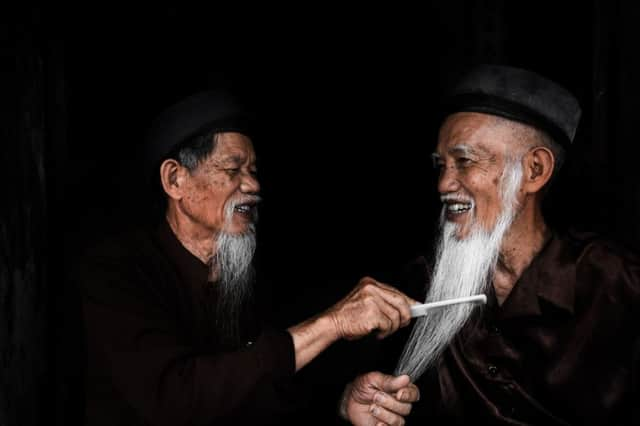French photographer Réhahn on the secret of taking an evocative image


Here, he talks about life in Vietnam, spending time with tribes and what makes a portrait photo stand out.
What makes a great portrait photo for you?
A great portrait is the one that you’ll always remember. It’s not only about technique but more about eyes and the stories they can tell. I’ve been called ‘the photographer who captures the soul’, and it’s the best compliment I could have. I spend time with people to get to know them before I photograph them, to make them feel comfortable and to gain their trust. I’ve spent hours with some of my subjects before shooting. The more you spend time, the more you’re able to capture their real personality.
What do you try to convey with your portraits?
Advertisement
Hide AdAdvertisement
Hide AdWe often hear that eyes are windows of the soul, and I think it’s true. Eyes can tell a story.
Each human being is unique. I have a big passion for photographing elders and their wrinkles. Probably, this passion has grown more since I started the Precious Heritage project, documenting the 54 ethnic groups of Vietnam in their traditional costumes. Only elders still wear the costumes. When I enter a village, I have to look for them if I want to see and learn about those ancient cultures.
What is the motivation for your project to photograph all of Vietnam’s tribes?
I’m very interested in ancient traditions and culture. In many places, traditional cultures are fading. Around 10 of the 49 groups that I’ve met can’t make their traditional costumes any more and many villages don’t have one. As a photographer, I have the opportunity to record and document these changes. I live in Vietnam and I have the possibility to go almost everywhere to research them. I can stay a week with them and interview the chief of the village.
Does the language barrier create any challenges when you’re working with different tribes?
I can speak Vietnamese and I travel with my Vietnamese assistant. But in some villages, elders speak only the ethnic dialect and we have to use body language until we find someone who can help us.
Sometimes, people invite me into their house, we sit, they serve tea and then we realise we can’t communicate. So we go out, find someone and come back.
Which person that you’ve photographed for the project on Vietnam’s tribes has made the biggest impression on you?
Advertisement
Hide AdAdvertisement
Hide AdI spent three days with An Phuoc, this little Cham girl with amazing blue eyes. At first, her family wasn’t keen for me to take photos but we spoke about their culture and I was invited to stay for lunch. They were happy to talk about their traditions and to share stories with me.
On the second day, I came back and proposed to help this family and the girls. Sapa, An Phuoc’s older sister, wanted to be a photographer, so I bought her a camera. They are now in my Giving Back project because this is one of my bestselling photos.
I bought a cow for the family and bikes for the girls. I visit them three times a year and I also invited them to stay in my house in Hoi An twice last year.
What’s it like to live in Vietnam?
When I’m not on the road, I have a cool daily routine: a latte at 6am at my favourite coffee shop, meeting with my assistants, answering emails, going to swim around 10am, an early lunch, a quick nap and then going out to take photos. I finish my day with a cigar along the river with a friend. It almost sounds like I’m retired, right? I only drive a motorbike here and it gives me a feeling of freedom that I’ve never felt anywhere else.
What other countries have you spent time in where you enjoy photographing people?
I’m a big cigar smoker, so Cuba is definitely at the top of my list of favourite places in the world. I’ve been to Cuba 14 times and I feel like I’m at home in Havana. I always bring Cohiba Cigars with me and share them with the people I meet. Sometimes I can smoke up to five cigars a day. Still, it’s less than Churchill.
India is another of my favourites. The whole country is an open air studio. I’ve been there five times and fell in love with Varanasi and Rajasthan. It’s a paradise for a portrait photographer and good training for improving your skills for interacting with people. It took me some time to understand how to approach Indian people. I became an expert in body language.
For more on Réhahn’s Vietnam’s tribes projects, photography, museums and other work, see www.rehahnphotographer.com His books include Vietnam: Mosaic Of Contrasts and The Collection. Follow him on Facebook, www.facebook.com/Rehahn.Photography/ and on Instagram @rehahn_photography